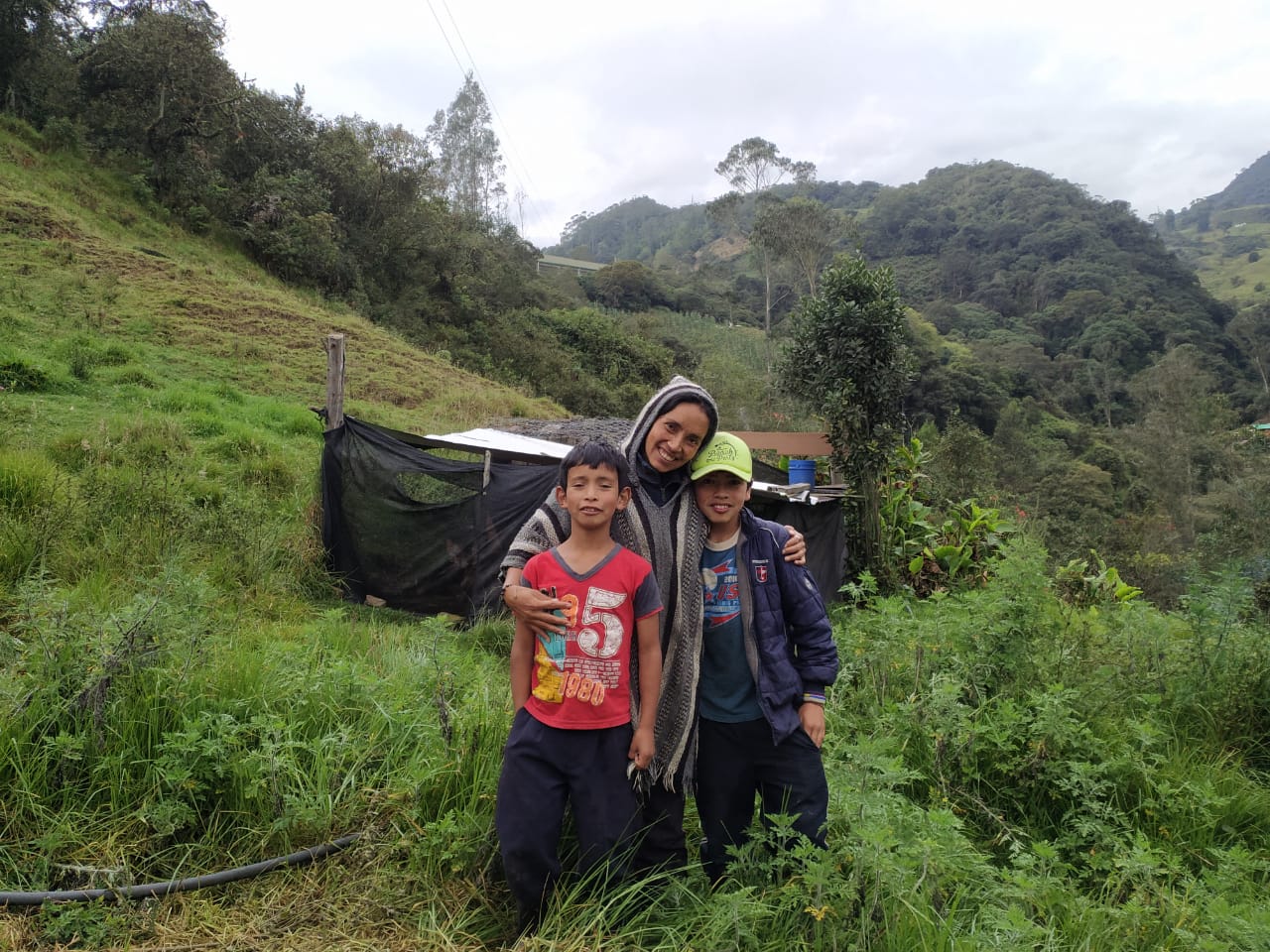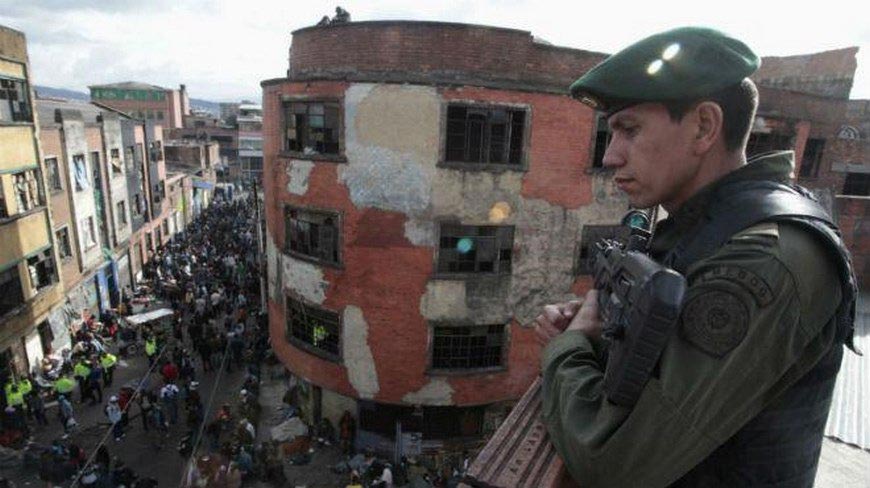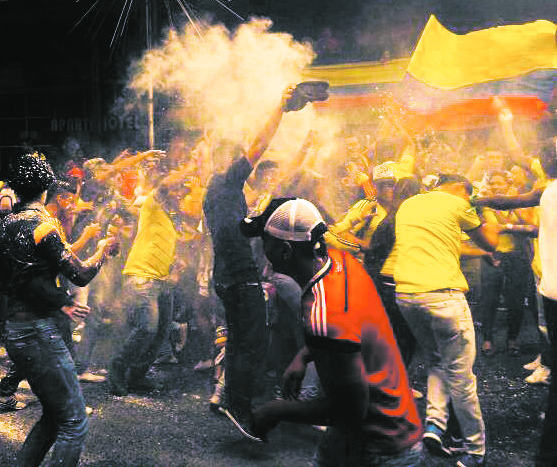We look at media sites striving to verify facts during a month of chaotic clashes.
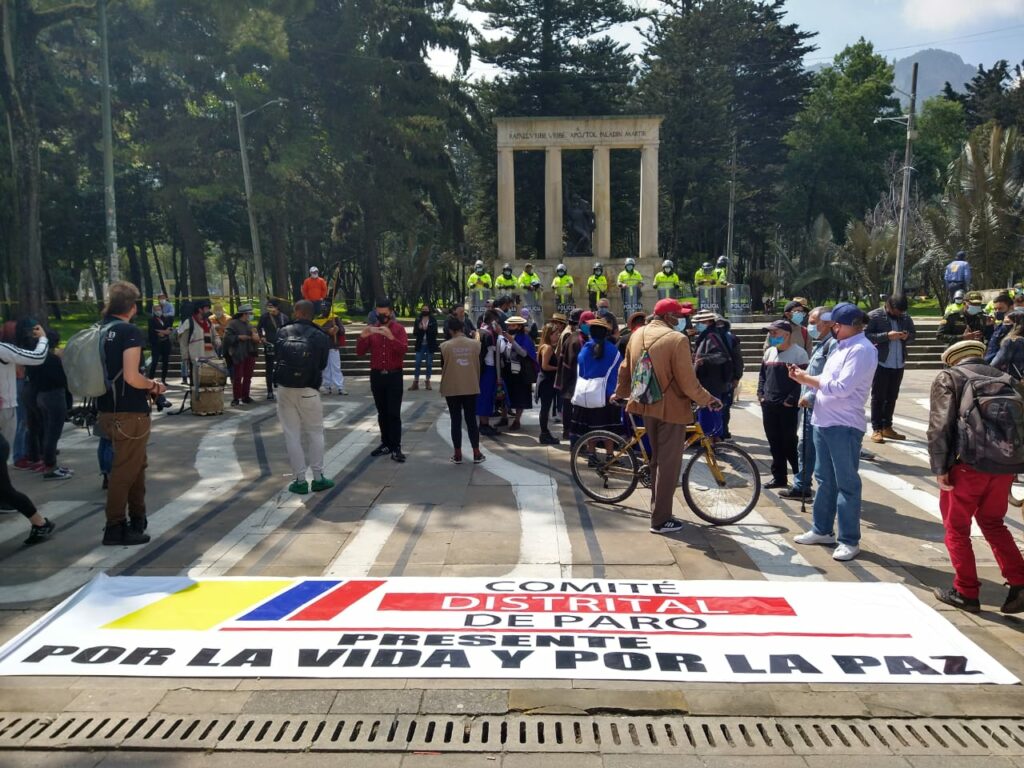
Colombia’s national protests have spiralled amid escalating violence from both sides: noisy demonstrators facing off with riot cops, while agitators in ski masks – los encapuchados – strike back with petrol bombs while smashing up bus stations and banks.
It’s a regular scenario in Colombia, but this year more deadly with over 60 people killed during the protests, including two policemen, and thousands more injured on both sides of the barricades.
One motor of the crisis is social media. Videos and photos of the protests spread faster than you can say “Facebook”. And mixed up in that is a huge dollop of misinformation in the form of exaggerations, fake news, recycled news, spurious announcements, and downright lies coming from both sides of a widening political chasm.
But there is also truth out there. And technology provides a way to lift the veil on claims and counterclaims filling the Twittersphere. Specialist media outlets are using forensic analysis of content posted to verify what’s true and what’s not.
Of course, it is still not the full picture; news media can choose which events to analyse which in itself creates bias. And verification results can lag behind the real time events by days or weeks, then be washed away by a new wave of incidents.
But for crucial events – and those forming public opinion – hindsight analysis can help understand the crisis. Here we summarise some recent finding from reputable sources.
ColombiaCheck: Clarifying fake news and controversial cases.
ColombiaCheck, an NGO formed of local journalists dedicated to verifying news stories across various platforms, has reported an avalanche of distorted data. It’s being spread maliciously or accidentally during the protests and includes “images from other years and other countries, videos and photos taken out of context, false audios and photo montages.”
One reassuring aspect of ColombiaCheck is its willingness to name and shame perpetrators from both sides of the political divide.
A crucial area of its current work is detecting fake news seemingly designed to create panic and unrest, often through bogus Facebook live feeds – and may take the form of old video reports manipulated to look like they are happening in real time, which Facebook allows. These frequently come from anonymous Facebook accounts seemingly created during the protests and seem designed to sow confusion among both protesters and police by sending them to non-existent flashpoints.
In one case, fragile peace talks between protesters and authorities in Cali collapsed after fake reports sent to protesters that the meeting was a trap by the police.
Other examples of reports analysed by ColombiaCheck are:
- A mash-up photo of a news headline claiming falsely that a left-leaning senator was “paying Venezuelans to assassinate young protestors and blame the police”.
- A widely circulated photo of a woman’s body was in fact a murder victim unrelated to the protests. Facebook users had spread the fake rumour she was abducted by ESMAD riot police.
- A document widely spread on Twitter claiming falsely that National Police were planning to “go on strike” in June, leaving people to “look out for their own security”.
- Video and photos of “ESMAD agents breaking windows” during the Colombia protests was in fact film of police in Venezuela in 2017.
These ColombiaCheck reports reveal the high level of messages designed to misinform with the expected outcome to inflame factions and contribute to the cycle of violence.
The NGO also deconstructs cases crucial to the national discourse, such as the Cali police truck incident early on the protests – May 6 – when protestors in Cali posted shocking reports of coming under live fire from a large group of plain-clothes policemen.
Analysis of several videos shows a civilian truck approaching a protest blockade, then stopping and the police fleeing from the back doors of a truck, running on foot while at least one person is clearly seen shooting his pistol multiple times towards protestors.
The analysis vindicates the protestors’ claims of being shot at, but also reveals that protesters at blockades are demanding cash from passing motorists. This tactic has been denied by local protest organisers, but is now shown to be true, and surely only adding to tension in the streets.
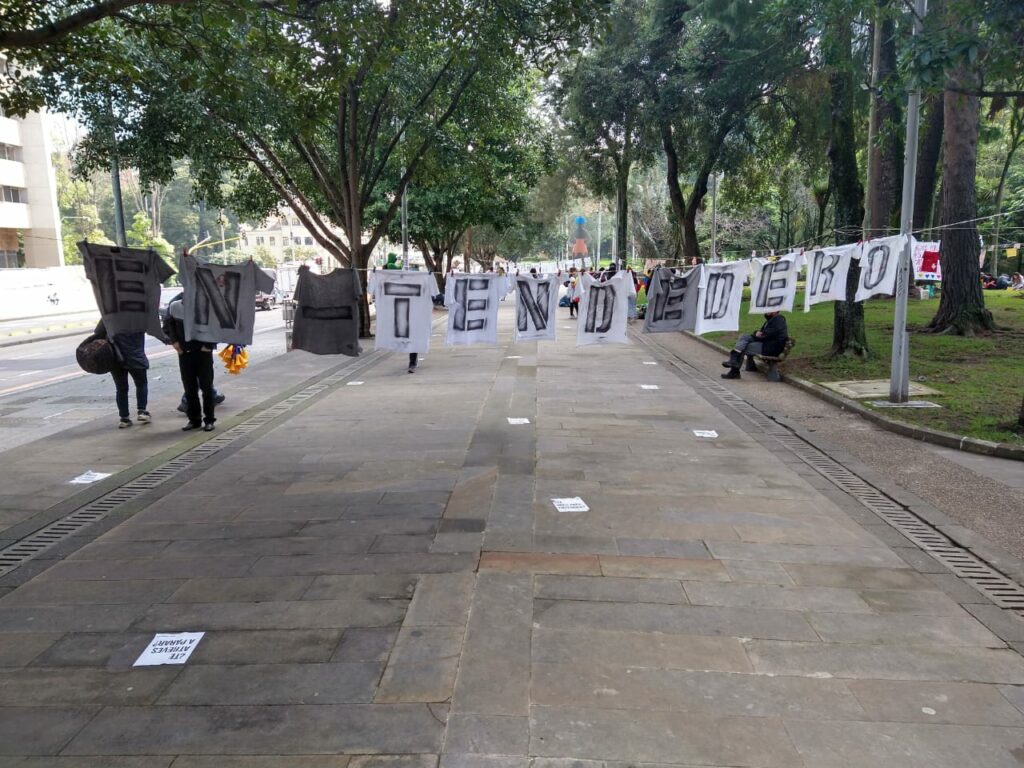
The Washington Post – Colombian police have overstepped the rules of engagement.
In its report Killed by Police in Colombia, the respected US newspaper uses audio and visual forensics to pick apart videos of four young protestors killed in the early days of the protests, here are the main findings:
- In Cali, on April 28, a 17-year-old youth is shot in the head after kicking a policeman mounted on a motorbike. The cop fires seven shots towards the fleeing youth, according to audio and video analysis. The last shot hits him in the head.
- Four days later, in the city of Ibagué, a 19-year-old man is killed by police gunfire two blocks from his house as a street crowd throws objects at an unseen target. Audio from video captures records 10 shots fired in 15 seconds. A week later, National Police accept their role in the shooting and two officers are arrested.
- The same date, May 1, a 24-year-old protester is killed in Madrid, close to Bogotá, after riot police shoot tear gas canisters directly at protestors. These weapons are designed to send projectiles in safer arcs and not fired directly. One anti-riot squad (ESMAD) officer has been arrested.
- On May 3, another youth was killed in Cali by a single small arms shot fired through a cloud of tear gas. Police would later state the situation followed looting of a supermarket, but the victim, who was distantly related to the city mayor, was attending a vigil for an earlier victim of police shootings according to the investigation.
These cases show that the police in Colombia have “overstepped the rules of engagement” and used disproportionate force, states The Washington Post. It also acknowledges the hard task of “guaranteeing the right to peaceful protests” during violence and vandalism.
The Post also points out that the Colombian police have opened 119 internal investigations, including several related to homicides.
Another structural problem identified by The Washington Post is that the National Police report to the Ministry of Defence which meshes civilian security into a military mindset formed through years of internal conflict with left-wing guerrilla groups.
The New York Times – Police using lethal force against protestors.
The New York Times Visual Investigations Unit has combed through hundreds of on-line photos and videos and cross referenced them with interviews and from reporters on the ground, particularly in Cali the city most affected by protest violence.
The findings – like The Washington Post – show overkill by police and ESMAD agents, and the reckless use of firearms against civilian protesters. One incident backed by videos shows protestors being kicked on the ground then police firing live rounds by their feet. Some were detained, clubbed and threatened with murder.
Another video shows a Cali protester on the ground shot with a gas canister at point blank range, the same day another was killed in a similar incident in the city.
In Bogotá, riot police are filmed attacking medics with tear gas and water cannons, even as the volunteers are assisting injured protestors.
Cerosetenta: keeping track of “repression and death on the streets of Colombia”.
This online interactive dashboard, Cartografia de Violencia Policial is run by media lab Cerosetenta at Bogotá’s University of Los Andes and has been tracking open-source data of violence during protests in Colombia since 2019 and provides the most complete record of filmed events confirmed for date and geographic location.
Despite its name, the site also covers actions by armed civilians and attacks against police.
Cerosetenta is supported by global investigators Bellingcat who give technical support into verification of data, such as time and geographical location, and “crowd intelligence” such as cross-referencing of events from multiple media sources. Events are then categorised into deaths, injuries, shootings where police are present and other forms of aggression.
It also kicks out fake data, such as videos from Chile or Bolivia, or as far away as India, which have been posted as events in Colombia.
An early success for the Cerosetenta team was to investigate – and later to provide legal evidence – after the killing of protester Dilan Cruz, shot by an ESMAD agent during protests in Bogotá in 2019, and one of the triggers for more recent protests.
The website can be clumsy to use, and lacks context surrounding particular events, but provides the most complete record of filmed events verified for date and geographic location.
- The stabbing to death of a plain-clothes police officer during protests and looting in Soacha in late April.
- Police mounted on motorbikes repeatedly kicking a prone protester in Medellín.
- A protester on foot run down by an armoured car in Popayán.
- A protester captured and beaten by police during a march on Madrid, Cundinamarca who later died of trauma injuries.
A posting analysed by Cerosetenta in recent days shows five civilian shooters colluding with a small group of police in Cali and firing repeatedly at protestors, a terrifying event caught close-up on camera by Jahfrann, a video photographer in Cali. It raises the spectre of paramilitarism that has plagued Colombia in recent decades.
The UN has since voiced “deep concern” at these civilian shooters, and the Colombia top police general has promised an investigation.
But in a twist in the tale, one of the civilian shooters filmed in Cali later revealed himself to the media as “a good person committed to the community” with no criminal record.
The shooter now states he was firing a gun with blank ammunition to “scare off vandals who were attacking a police station”, and was reacting to recent threats against him and his family. He apologised and told the cameras: “Guns and civil war are not the path.”
The interview with the civilian shooter highlights how quickly the narrative can shift during fast-moving events – though his words would sound hollow to families of protestors killed with live ammunition in recent weeks.
According to data collected by NGO Indepaz, at least seven of the 66 people killed in that period in the protests were shot by “civilians.” Another 36 were killed by police or ESMAD, and the rest by persons unknown.
The need for media verification is higher than ever during Colombia’s month of turmoil.

